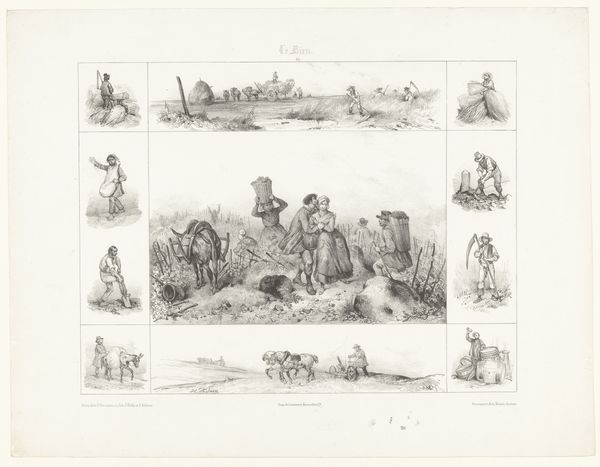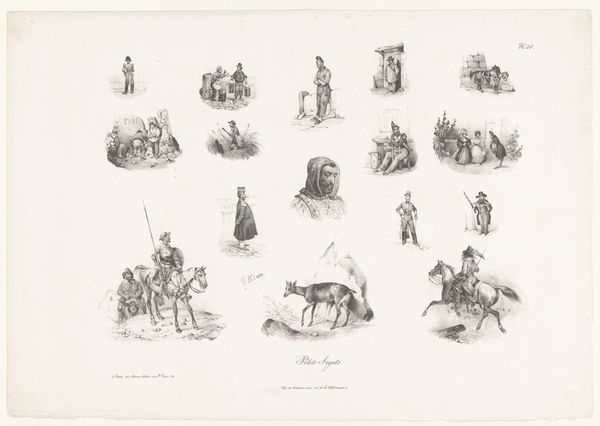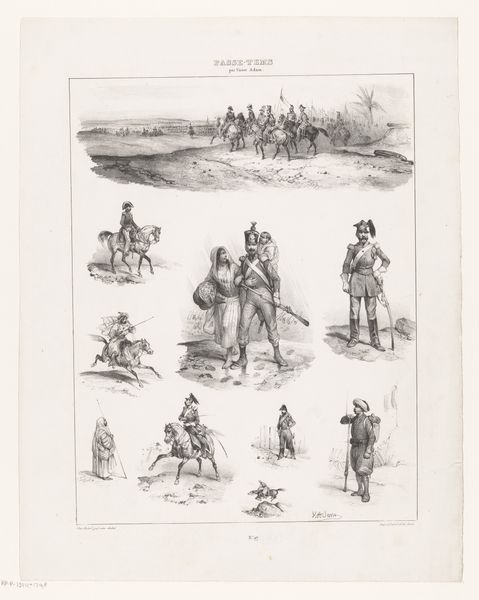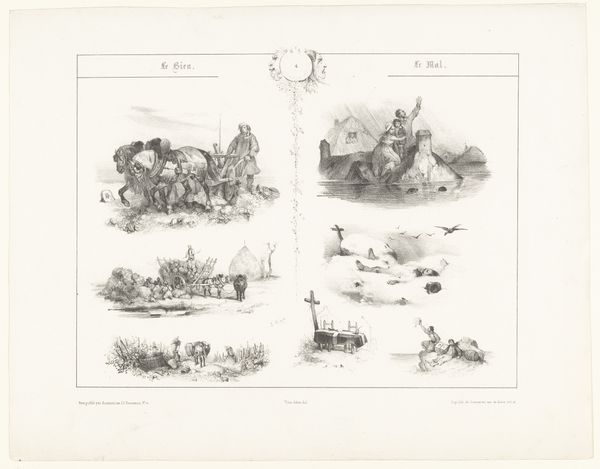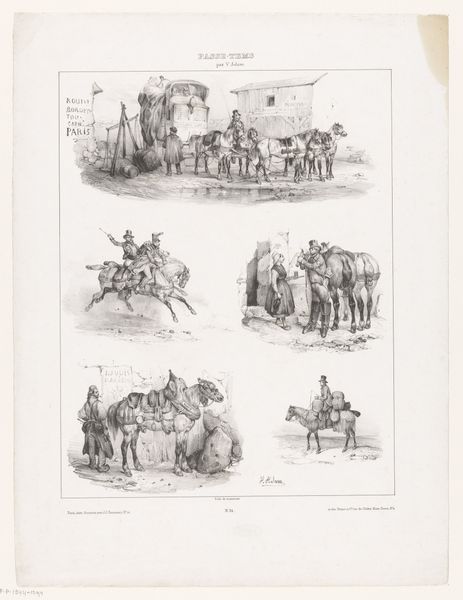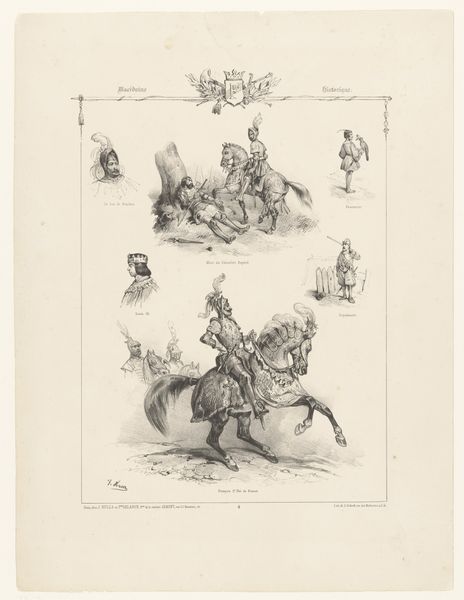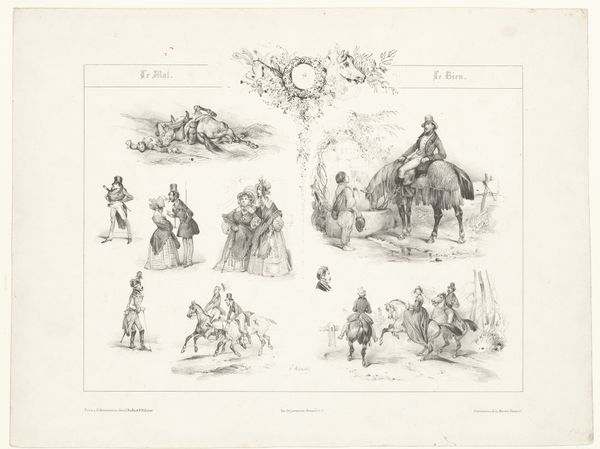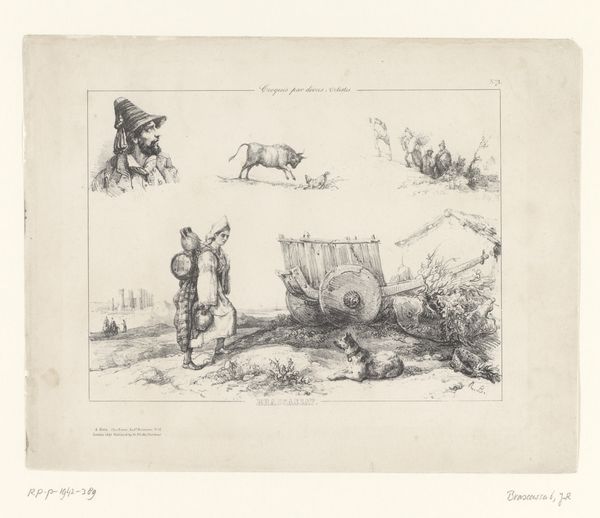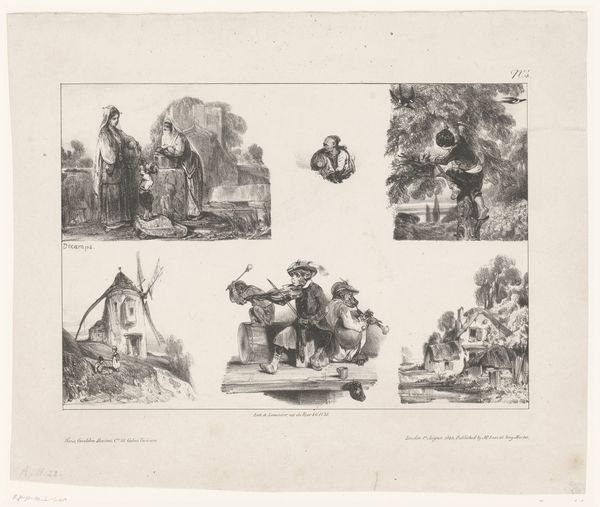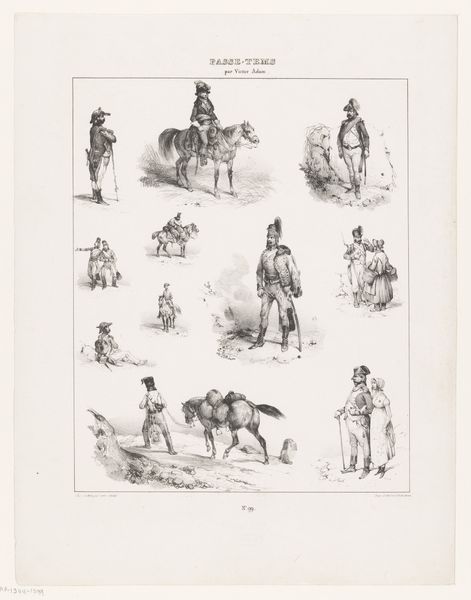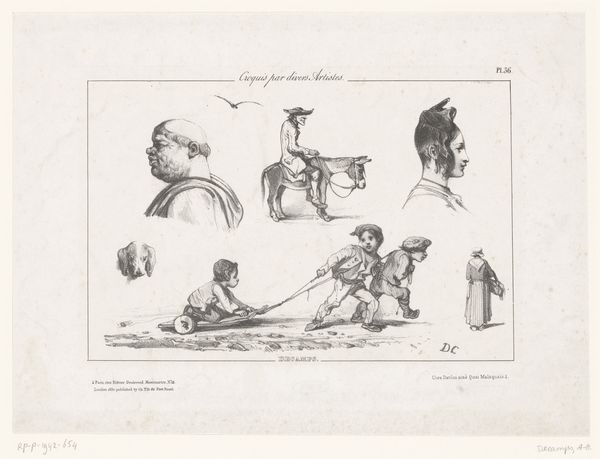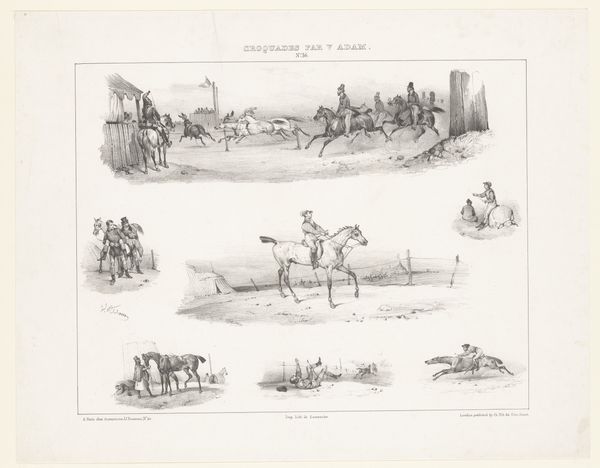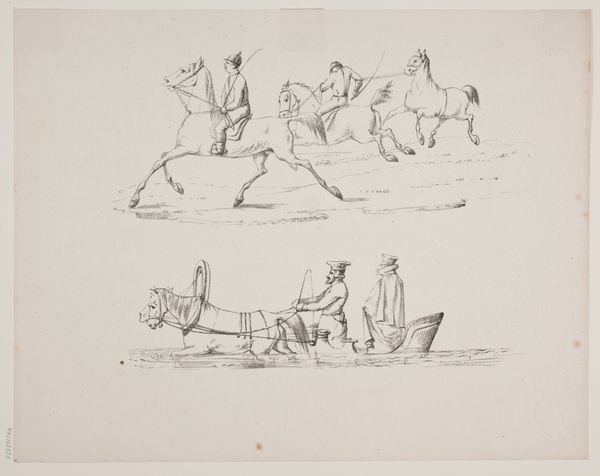
Twee voorstellingen van kwade dingen en twee voorstellingen van goede dingen in het leven 1839
0:00
0:00
victoradam
Rijksmuseum
drawing, print, ink
#
drawing
#
narrative-art
# print
#
pen illustration
#
landscape
#
ink
#
ink drawing experimentation
#
romanticism
#
genre-painting
Dimensions: height 269 mm, width 360 mm
Copyright: Rijks Museum: Open Domain
Curator: Let's consider this fascinating print by Victor Adam, created in 1839. The full title translates to "Two representations of bad things and two representations of good things in life." It resides here at the Rijksmuseum, offering a comparative glimpse into perceived fortune and misfortune through the lens of 19th-century eyes. Editor: My immediate impression is one of stark contrast. The compositions are busy, detailed. There's a flurry of ink strokes, depicting action, mostly centered around men hunting. It seems deliberately constructed to highlight opposing experiences. Curator: Precisely! Examining the material choices – ink on paper – highlights printmaking as a means to disseminate such moral comparisons widely. Consider the implications of mass-produced morality plays aimed at a burgeoning middle class. Adam worked as an illustrator and lithographer, these skills certainly came to hand to promote these themes to a larger audience. Editor: Let's delve into the symbolism. On the "bad" side, we see a huntsman alone on horseback in a wintry scene, and figures crouched, nearly submerged, in what appears to be a swamp. Those postures evoke a sense of isolation, perhaps struggle. Whereas the "good" side portrays a triumphant rider and men collaboratively hunting from a boat. Curator: The social context is crucial. Hunting, then, was more than just sustenance; it represented power, leisure, and camaraderie, particularly for the privileged classes. Adam subtly critiques or reinforces class divisions depending on your point of view, showcasing how even leisure activities could be sources of inequity or, in the other scene, an opportunity to spend valuable time with one’s peers. Editor: The wintry setting on the "bad" side evokes harsh conditions, reflecting challenges and adversity. The "good" side depicts calmer waters, easier circumstances. Hunting itself becomes a metaphor—a life of difficulty versus one of relative ease. The repetition of those scenarios allows those with very little to find themselves within this picture as well as others who have means of getting away. Curator: Right, the image acts almost as a moral barometer. By dissecting the scenes and their construction, we reveal the value systems at play. Even the labor invested by Adam speaks to this—a carefully rendered print, intended to educate and guide conduct through readily accessible imagery. This was no easy piece to undertake or view. Editor: And that duality, played out through easily understood iconography—weather, landscape, communal activity—makes it incredibly compelling even now. We recognize these symbols on a very human level and they persist across decades and boundaries to highlight the challenges in life and the value of good fortune. Curator: I agree, and focusing on the materiality of the print, we begin to understand how art like this could serve as both a reflection of societal values and a subtle tool for social commentary. Editor: The balance is truly amazing when we realize it allows the mind to explore these ideas.
Comments
No comments
Be the first to comment and join the conversation on the ultimate creative platform.
